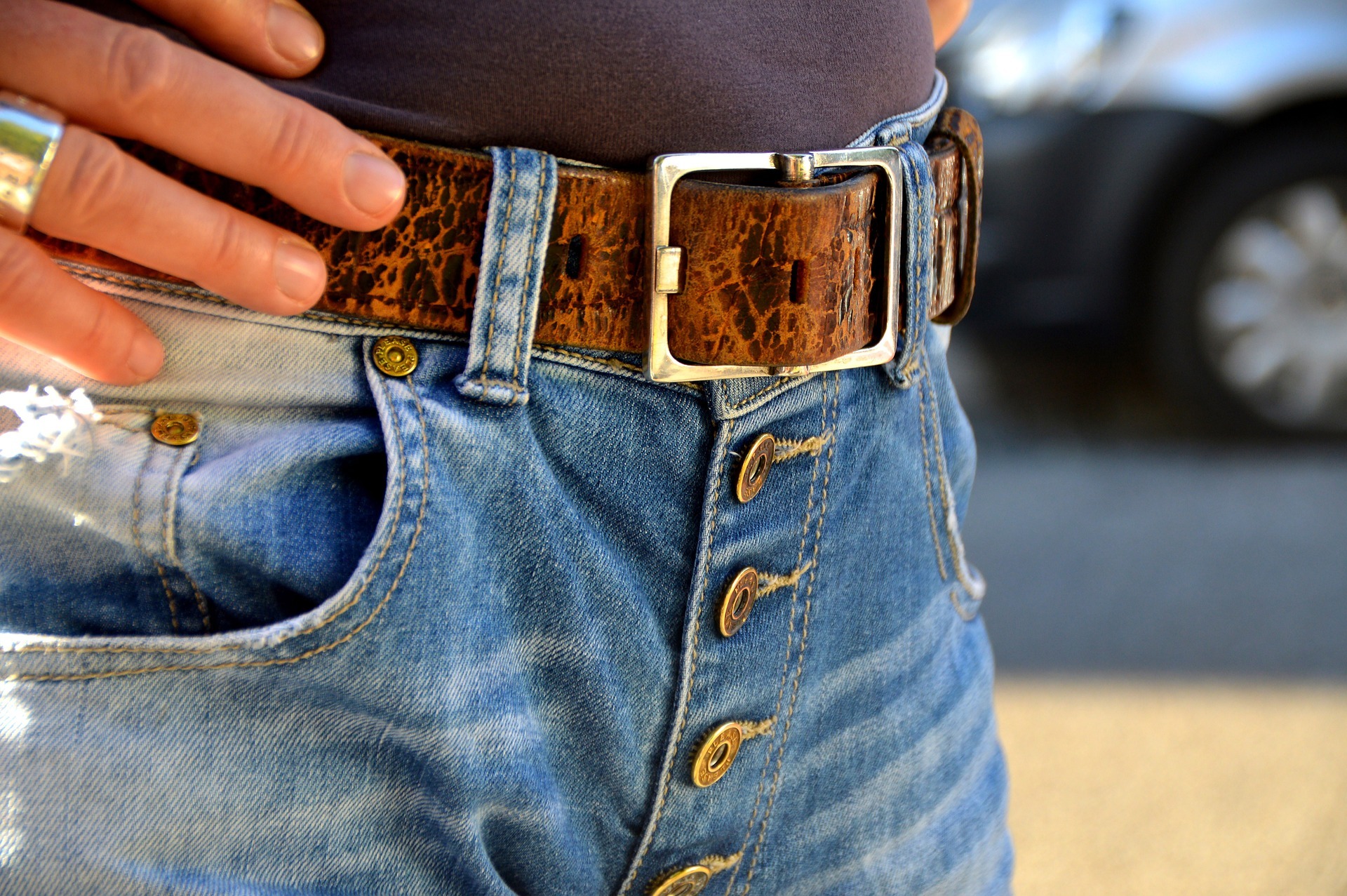
Try On Belt Before You Buy
BY: Judith Rasband • Mar 25, 2023
Have you ever bought a belt and then had to punch a new hole to make it fit? I have. In a hurry, I failed to check the size before I bought it.
A basic belt is essential, and a great costume belt is one of the best fashions buys you can make. But not many people think one size belt fits all. Not so.
Belts range from 22 to 32 inches for women and 28-50 inches for men. They can be marked small, medium, or large instead. If you need an extra-large belt, you may need to find an extra special store.

Belt sizes generally correspond to waist measurements, but some are adjustable. Try it on to test the size. Slightly loose is better than too tight or you’ll end up looking like a sack tied in the middle.
If you are one of the few whose weight is slender, with midriff and hips average in proportion, and if you are average in height or tall, you are free to tie, wrap, buckle, and belt to your heart’s content. But if you’re short or wide through the middle, here are some hints you should heed.
First of all, belts don’t need to be noticeable to be functional. So don’t feel you have to ban the belts forever. Just limit the amount of attention they attract to the area.
Matching belts don’t attract as much attention as belts in contrasting colors or textures. Narrow belts don’t attract as much attention as wide ones. Small and simple buckles are not noticeable as large and elaborate buckles.
A belt worn at the waist with your blouse or shirt tucked in attracts less attention than a belt worn on the outside of your shirt or worn below the waist.

With these points in mind, a matching narrow belt with a simple buckle is a good choice if you have a wide midriff, wide waist, or broad hips. This also applies to a person who is short or simply short-waisted. Wide or heavy belts usually overpower a petite person.
When worn under an open jacket, a contrasting belt buckle draws attention to the center of the body, visually slimming it. And wearing a jacket, no one knows how wide the waist really is. Sneaky but smart!
“The wider the waistline, the slimmer the belt,” is a good rule of thumb. This holds true unless you are also quite tall and well-proportioned. In this case, you can carry a large belt or sash with class.
In selecting long-wearing basic belts, look for one-piece leather ones. Suede and fabric belts become smooth and threadbare with hardware. Consider them as special occasion belts.
Examine the quality of construction. Check the belt backing to make sure it is well-glued stitched or both. Belt edges can be left raw or tuned in, but in either case, edges should be smooth. Decorative or top stitching should be secure and evenly spaced. Staples, snaps, rivets, or stitching used to hold the buckle in place should be secure. Belt notches can early split, tear or unravel unless properly bound by metal or thread. Try the belt on to test their strength.
Rub a suede belt between your fingers to see if it rubs off and will discolor your clothing. Cord, straw, and silky-type belts can slip or come untied, even when knotted. Try belts on to test their hold.
Just like any other wardrobe item, belts require care. Leather belts can be cleaned with neutral wax. Fabric belts backed with fabric can be gently washed. If backed with leather, vinyl, or cardboard, they should be dry-cleaned.

Metal belts and buckles may tarnish, but metal polish can be used to restore the original appearance. Clear lacquer can be used to coat and prevent this discoloration permanently.
To prevent possible fold-line cracks, belts should be rolled up or hung up when not in use. With proper care, your better belts may last a lifetime.
Note: This article was previously published in the printed issue of The Corporate, Guide and Style for Professionals Magazine

